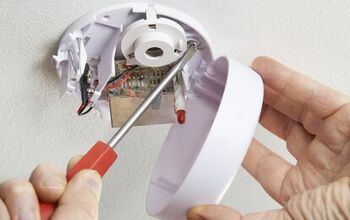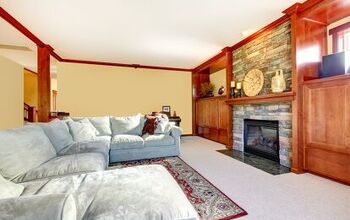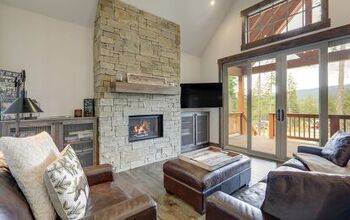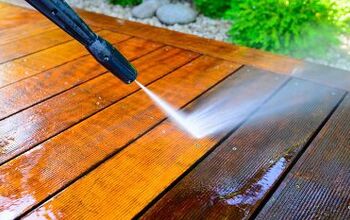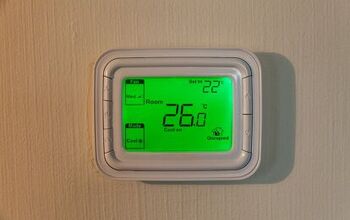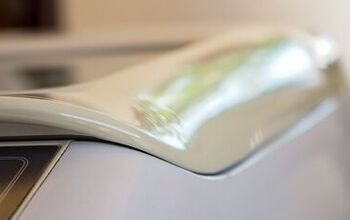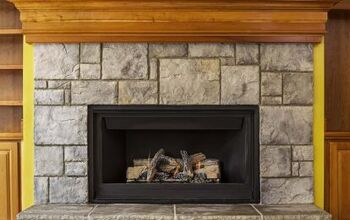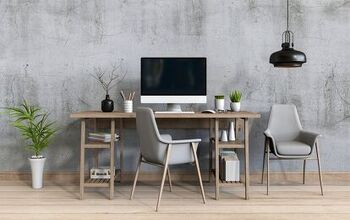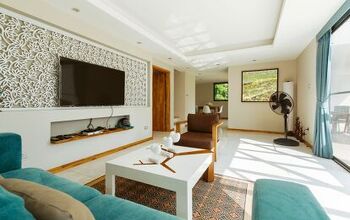Shoe Molding Vs. Quarter Round: What's the Real Difference?

When people first walk into your home, one of the first things they’ll notice is your flooring and your trim. However, if there’s a gap between the trim and the floor, it’s going to stand out like a sore thumb. If this happens, you likely didn’t use shoe molding or quarter round to finish your trim or flooring project.
While both pieces of molding are applied to the baseboard, quarter round is 1/4″ round circle and shoe molding is 1/8″ in a round circle. Shoe molding doesn’t come out as far from the wall. Most homeowners prefer shoe molding over quarter round because it doesn’t take up as much space and is more aesthetically pleasing.
In this article, we will look at the differences between shoe molding and quarter-round. We’ll also look at where each of them is most useful and can add the most beauty to your home. Our goal is to help you know whether you should use shoe molding or quarter round for your next home project.
What Is Shoe Molding?
Also known as “base shoe,” shoe molding is a decorative piece of trim that comes in various shapes and sizes. Shoe molding also comes in a variety of colors and materials based on what your needs are for your home. You’ll usually see shoe molding at the base of your trim, where it meets the floor.
There are two basic types of shoe molding: decorative and basic.
- Decorative shoe molding
As the name indicates, decorative shoe molding is available in various shapes, colors, and patterns to spice up your home.
- Basic shoe molding
Basic shoe molding is usually much narrower and not as flashy.
What Is Shoe Molding Used For?
The purpose of shoe molding is to seal the gap between your trim and floor. Often when someone redoes their home’s flooring, they’re unable to perfectly reattach the trim without leaving a void. Shoe molding is used as a neat way to cover this area up and form a smooth transition between the floor and trim.
What is Quarter Round Molding?
What is Quarter Round Used For?
Quarter round often serves the same purpose that shoe molding does – to cover gaps between the floor and trim of your home. Quarter round is also available in a variety of different colors, materials, and lengths. However, quarter round always has the same symmetrical features as a quarter-circle.
Video: Comparing Quarter Round to Shoe Molding
Is Baseboard Molding Necessary?
While it can be tempting to try to get away without including baseboard molding, this isn’t a good idea. People often make the mistake of thinking that quarter round and shoe molding are only cosmetic. While it serves the purpose of giving your home a nice finishing touch, it also serves other purposes.
Baseboard molding is necessary because there will be a gap between the floor and the trim without it. This will likely lead to clumps of dirt getting into that gap and making your home unsanitary and dirty. The baseboard can also help prevent certain types of flooring from shifting after it’s installed.
Installing baseboard molding might be challenging and tedious work, but the finished product will be well worth your efforts.
Quarter Round vs. Shoe Molding: What’s the Actual Difference?
Now that you understand what quarter round and shoe molding is, you’re probably thinking that they’re pretty similar. You’re not wrong in that aspect, but there are a few key differences, which we’re going to look at now.
Quarter round is always the same shape and roughly the same size. It will always look like one-quarter of a circle and will feature two flat sides and a rounded front side. Shoe molding is also perfectly symmetrical in its shape. The flat sides will always meet at a 90-degree angle opposite the circular front side. This makes it perfect for sitting flat against the floor and the wall and maintaining its symmetry.
While maintaining the same 90-degree corner on one side, shoe molding features a round front side that isn’t perfectly circular. Instead, the radius side of shoe molding is cut shorter in the front and turns down to create a flat edge on the lower side of the radius. This ultimately makes a thinner piece of trim.
Because the distance from the 90-degree corner isn’t always the same, shoe molding can be taller or shorter than quarter round. It can also be deeper or thicker, depending on your desires. However, in general, shoe molding is usually taller and thinner than quarter round, but only slightly.
Considerations Before Deciding on Shoe Molding vs. Quarter Round
If you’re not sure about your decision between shoe molding and quarter round, here are some things you should consider.
1. The Size and Scale of Your Home
The first thing to think about is how big the rooms and hallways are in your home. You also need to think about where your furniture will be and how close you want it to the wall versus jutting into a room. The standard size of the quarter round is 3/4″ thick and 3/4″ tall, while shoe molding is closer to 1/2″ thick and various heights. It doesn’t sound like much, but a few inches here and there can make all the difference in a smaller home.
If space isn’t a problem and you’ve got more than enough to spare, quarter-round is a solid option. However, if you live in a cramped home with limited floor space, you might want to opt for shoe molding. Shoe molding will still close the gap between your floor and trim but will do so without taking up more space than it has to.
As we said, the size difference doesn’t sound like much, but it adds up quickly when you take your entire home into consideration. You’re losing tiny bits of space along every single wall, which will make a small room feel even smaller.
2. Flooring Installation
The most common reason that people have to install quarter round or shoe molding is when they install new flooring. Base molding isn’t exactly easy to remove, and you’ll likely damage it when doing so. Or, you’ll probably want to upgrade your molding at the same time that you do your flooring. Either way, you’ll likely have to install new quarter round or shoe molding.
Deciding between the two depends on what route you plan to go when installing your floors. If you plan to remove your baseboards and install new ones, you can opt for shoe molding, quarter round, or neither. However, if you plan to install new flooring on top of the old one without removing the baseboards, you probably want to opt for shoe molding.
Shoe molding is thinner and sleeker than quarter round. It won’t jut out as far into your living space and will look neater in the long run. Shoe molding is especially useful if the original trim in your home is short. Remember that it will look even shorter when new flooring is pressed up against it, which makes shoe molding the better option.
3. Painting Vs. Staining Your Molding
The decision to paint vs. stain your molding will come after you’ve made your quarter round vs. shoe molding decision. You can paint or stain both shoe molding and quarter round, but it can be tough to decide which route to go. Staining is more expensive and more labor-intensive than painting, often costing twice as much and taking more than twice as long.
Staining will also make your baseboard look shorter if you have stained floors. The stained molding will blend in so seamlessly with your floors that people will hardly notice a difference. They will, however, notice that your trim looks oddly short. If you already have short trim and want stained molding, you might want to opt for quarter round since it’s shorter than shoe molding.
Shoe Molding vs. Quarter Round Price: Which One Costs More?
From a quick look, we can see that quarter round can be slightly less expensive than shoe molding but will depend on the material. Also, the cost will depend on whether or not you want it to be decorative. The average home is around 1,500 square feet which means that it will have roughly 500 linear feet of trim and molding along its walls. Here is what you can expect to pay based on those dimensions for various shoe molding and quarter round options.
Cost Per Linear Foot
| Material | Decorative | Finished | Unfinished | Painted |
| MDF Shoe Molding | Void | $1.20 | Void | $1.00 |
| Wood Shoe Molding | $2.00-$4.00 | $1.00-$2.00 | $.50-$1.00 | $1.00-$2.00 |
| PVC Shoe Molding | Void | Void | $.50-$.80 | Void |
| MDF Quarter Round | Void | $1.00 | Void | $.80 |
| Wood Quarter Round | Void | $1.00 | $.50-$1.00 | $1.00 |
| PVC Quarter Round | Void | Void | $.50-$.70 | $1.10 |
Types of Baseboard Materials
Because there are many different types and colors of floors and homes, there are just as many types of baseboards to match. No matter what your desires are, there’s likely something out there that suits your fancy. Baseboard and molding are meant to be paired with anything from wood to stone to concrete and anything in between. The baseboard can also be made from many different materials.
Wood
Wood is one of the most appealing and expensive options when it comes to baseboards. Wood is a 100% renewable resource and is sustainable, which makes it an excellent option for those with a green thumb. It also pairs very well with most materials and is one of the more durable baseboard options.
The only downside is that wood is more difficult to install than other types of molding. It also usually has natural imperfections, which can either add to or take away from its beauty.
MDF
MDF stands for medium-density fiberboard and is rapidly increasing in popularity. It’s designed to mimic all the good qualities of wood, but without the difficult installation and the imperfections. MDF is usually prestained, which makes for easy painting, or it’s also available pre-painted.
MDF is also versatile and has slight flexibility that wood simply doesn’t possess.
Polystyrene
If you’re on a tight budget and need something that will save you money, polystyrene is the best option for you. Polystyrene isn’t necessarily ugly. It just isn’t as high-end as MDF or wood baseboard. It often looks and feels cheaper and lower end and is resistant to moisture, making it challenging to paint.
All in all, polystyrene will get the job done for you. It just won’t look quite as good as homes with MDF or Wood.
PVC
Another good budget option for baseboards is PVC. PVC is a slightly newer and less-used option, but it definitely has its place in the baseboard world. It’s made of a mixture of plastics and is designed to resemble wood and MDF. It’s also water-resistant, which means that it won’t get damaged from the occasional spill, but it also means that it’s difficult to paint.
PVC is next to impossible to repair if a crack or other damage occurs, which means you’ll have to replace it if it gets damaged.
Other Uses for Shoe Molding and Quarter Round
While the most common use for shoe molding and quarter round is as a baseboard for your flooring, the possibilities don’t end there. Many people like the look of these materials enough to use them as trim throughout their homes. You can put them around windows, doors, and even ceilings.
If you have a crafty side, you can even cut and shape shoe molding and quarter round to be used as picture frames. The possibilities are endless when you put your mind to work and get the creative juices flowing.
Alternatives to Shoe Molding
There are instances when you need to fill the gap between floor and trim, but you don’t want to use shoe molding. The most popular alternative to shoe molding is quarter round. Quarter round is more basic than shoe molding, but it’s also usually slightly cheaper.
Quarter round is also available in a variety of lengths, colors, and materials. The advantage of using quarter round as opposed to shoe molding is that it’s shorter and won’t take away from your trim quite as much. Outside of quarter round or installing newer and thicker trim, there really aren’t a lot of things you can use in place of shoe molding.
What Can I Use in Place of Quarter Round?
Just like quarter round is the best substitute for shoe molding, shoe molding is the best substitute for quarter round. There simply aren’t many other materials of their kind.
When your house is initially being built, a skilled carpenter and floor installer will work together to make it so that quarter round and shoe molding isn’t necessary. That is, of course, unless you want it to be added. They have the ability to install the flooring and trim in a way that there isn’t a gap between the two.
However, if you ever redo your flooring, quarter round or shoe molding will come in extremely handy.
Is Shoe Molding Outdated?
If you’re thinking about installing shoe molding in your home, you might be asking yourself, “Is shoe molding out of style?” Rest assured that shoe molding is not out of style and that it’s still used in thousands of remodeling jobs around the country. Shoe molding is adapting to the times and is available in many modern looks that will give your home flair and character.
Is Quarter Round Outdated?
Is quarter round going out of style? While you don’t see it as often as you once did, that’s not because it’s going out of style. Quarter round is limited in its abilities and design, but it’s certainly not going out of style. Many people simply opt for new trim or shoe molding when they decide to redo their floors.
Hopefully, this article has served its purpose in helping you figure out whether you need quarter round or shoe molding. Both of them fulfill the purpose of adding beauty and completion to your home. However, choosing the right one could mean the difference between a home that feels open and inviting or small and plain. Choose wisely!

Jessica considers herself a home improvement and design enthusiast. She grew up surrounded by constant home improvement projects and owes most of what she knows to helping her dad renovate her childhood home. Being a Los Angeles resident, Jessica spends a lot of her time looking for her next DIY project and sharing her love for home design.
More by Jessica Stone



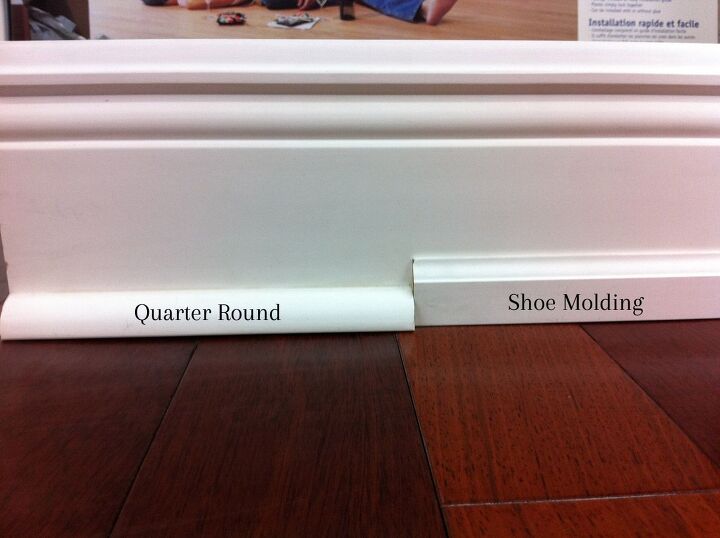








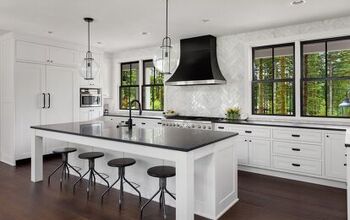
![The 10 Best Table Saws - [2022 Reviews & Buyer's Guide]](https://cdn-fastly.upgradedhome.com/media/2023/07/31/9070645/the-10-best-table-saws-2022-reviews-buyer-s-guide.jpg?size=350x220)
